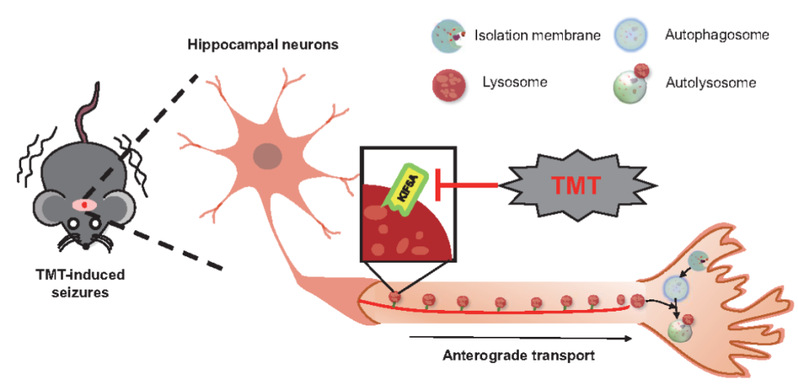A recent study conducted by Prof. Zhou Zhou's lab at Department of Environmental Medicine, School of Public Health, ZUSM, elucidated the molecular mechanisms of TMT-induced neurotoxicity. The original article of this study was published in the top-notch journal Autophagy on 11 March, 2020.
Trimethyltin chloride (TMT) is widely used as a constituent of fungicides, plastic stabilizers in industrial and agricultural fields, and it has been documented that TMT is detectable in foodstuffs, beverages, and household items. TMT is also generally acknowledged to have potent neurotoxic effects, with many cases of human poisoning being continuously reported over the past few decades. Despite numerous biochemical and neurochemical studies on TMT, the underlying mechanism of its neurotoxicity remains unknown.
In Prof. Zhou's study, a proteomics screen coupled with bioinformatics analysis was applied to investigate the potential involvement of autophagy machinery in TMT neurotoxicity. Results showed that autophagy-lysosome dysregulation played a critical role in TMT-induced neurotoxicity. Interestingly, TMT impaired autophagic flux but did not inhibit autophagy induction or autophagosome maturation, and did not affect autophagosome-lysosome fusion as well. TMT significantly altered lysosomal pH to inhibit lysosomal functions and subsequently hindered autophagic flux. Based on the analysis of molecular interaction network by IPA, KIF5A, a intracellular motor protein for axonal transporting, was found as the critical factor in TMT- impaired autophagy processes. As expected, Kif5a inhibition reduced axonal lysosome transportation and induced autophagic flux impairment. Overexpressed kif5a markedly antagonized TMT-induced neurotoxicity and autophagic flux impairment.
Collectively, this study provides new evidence to understand the pivotal role of KIF5A-dependent axonal transport deficiency in dysfunctional autophagy in TMT-induced neurotoxicity. The new findings of the study bridge the knowledge gap between autophagy and TMT-induced neurotoxicity. They may also have implications for understanding the roles of axonal transport and autophagy in the development of neurological disorders induced by environmental stress.

Schematic model of autophagic flux impairment caused by KIF5A-dependent axonal transport deficiency in TMT-induced neurotoxicity